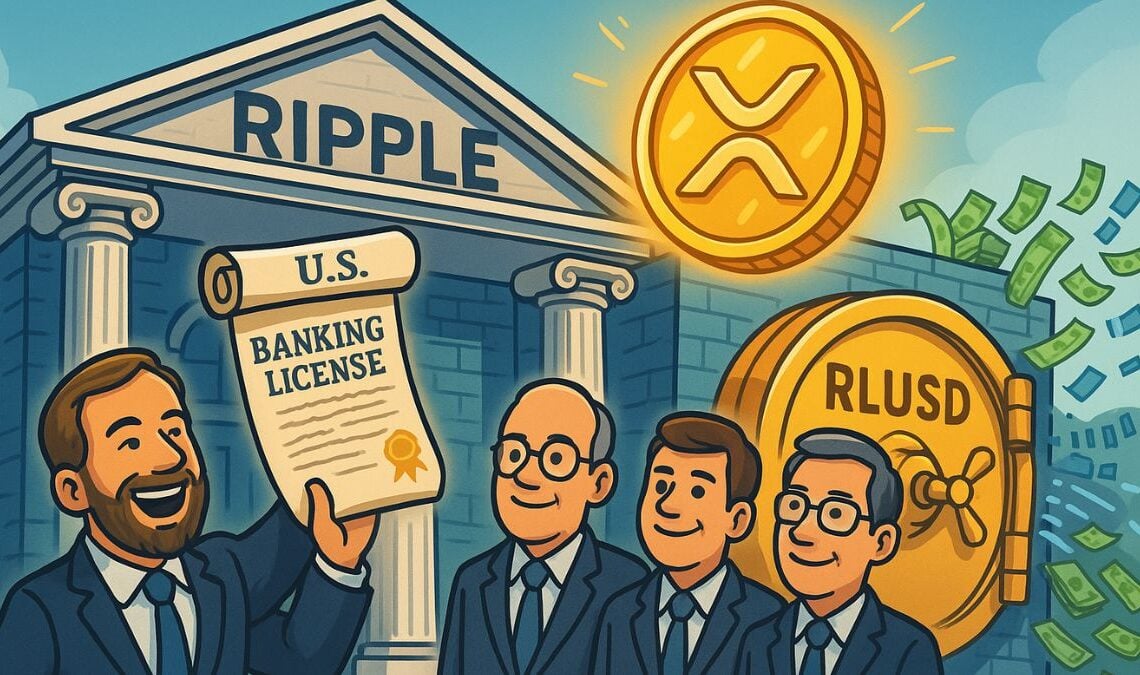The spotlight is once again on XRP, as Ripple officially confirmed its application for a national bank charter from the Office of the Comptroller of the Currency (OCC). This move marks a major regulatory milestone not just for Ripple, but for the XRP ecosystem at large. As institutional appetite grows and crypto companies race for compliance, Ripple’s banking ambitions could redefine XRP’s position in the global financial system.
True to our long-standing compliance roots, @Ripple is applying for a national bank charter from the OCC. If approved, we would have both state (via NYDFS) and federal oversight, a new (and unique!) benchmark for trust in the stablecoin market.
— Brad Garlinghouse (@bgarlinghouse) July 2, 2025
Earlier in the week via… https://t.co/IdiR7x3eWZ
Source: Brad Garlinghouse
In a statement posted on X (formerly Twitter), CEO Brad Garlinghouse outlined the company’s strategic push for regulatory clarity. Ripple is not only seeking federal oversight, but also access to a Fed Master Account, which would allow it to custody $RLUSD, its upcoming stablecoin, directly with the Federal Reserve.
This is more than a compliance checkbox. For XRP, it’s a gateway to mainstream financial integration.
XRP Market Reacts to Regulatory Momentum
Following the announcement, XRP gained over 2.7% in 24 hours, reaching $2.29 on Bitstamp. While this may seem modest compared to previous bull runs, the move comes at a critical technical juncture. XRP is now trading near the upper boundary of its recent range, testing key resistance around $2.30.
Source: Trading View
This regulatory development adds strong bullish sentiment to XRP’s mid-term outlook. While broader altcoin markets remain cautious, XRP is standing out as one of the few major tokens advancing on legal and infrastructure fronts.
How a Banking License Could Transform XRP’s Future
If approved, Ripple’s banking license would allow it to:
- Operate as a federally regulated financial institution
- Hold stablecoin reserves directly with the Fed
- Offer crypto-native financial services under US law
- Eliminate reliance on intermediaries for fiat on/off-ramps
This would dramatically increase the trust and utility around XRP and Ripple’s broader suite of products. As stablecoins like RLUSD grow in adoption, the synergy between Ripple’s infrastructure and XRP’s liquidity function becomes clearer.
The banking license also gives Ripple regulatory parity with major institutions, making XRP a more attractive option for banks, fintechs, and even sovereign players exploring blockchain rails for cross-border payments.
XRP vs Other Compliance-First Tokens
With this move, Ripple joins firms like Circle in pursuing full regulatory integration. However, XRP holds a unique advantage, it already operates a proven payment network and is recognized for its utility in international settlements. While stablecoins and Ethereum-based assets focus on retail and DeFi, XRP’s core mission remains bridging institutional finance and blockchain technology.
By becoming a bank, Ripple may shift from being a “crypto company” to a blockchain-enabled financial institution, with XRP at the center of its liquidity and settlement model.
Final Thoughts: What Ripple’s Bank License Means for XRP
Ripple’s bid for a US banking license signals a transformative moment for XRP. From legal battles to regulatory leadership, the narrative is changing fast. If successful, this application could put XRP in a category of its own, not just as a token, but as a pillar of compliant, blockchain-based finance.
As the rest of the crypto market struggles to keep pace with shifting regulations, XRP may be positioning itself as the most “future-proof” digital asset in the market.

















